Are Zinnias Perennials or Annuals? It Depends!
Is there a more gorgeous flower you can plant than a Zinnia, particularly in a cut flower garden? We can’t think of one! From a complete amateur gardener perspective, they are super easy to grow and we love that about them! But the question remains, are Zinnias Perennials or Annuals?
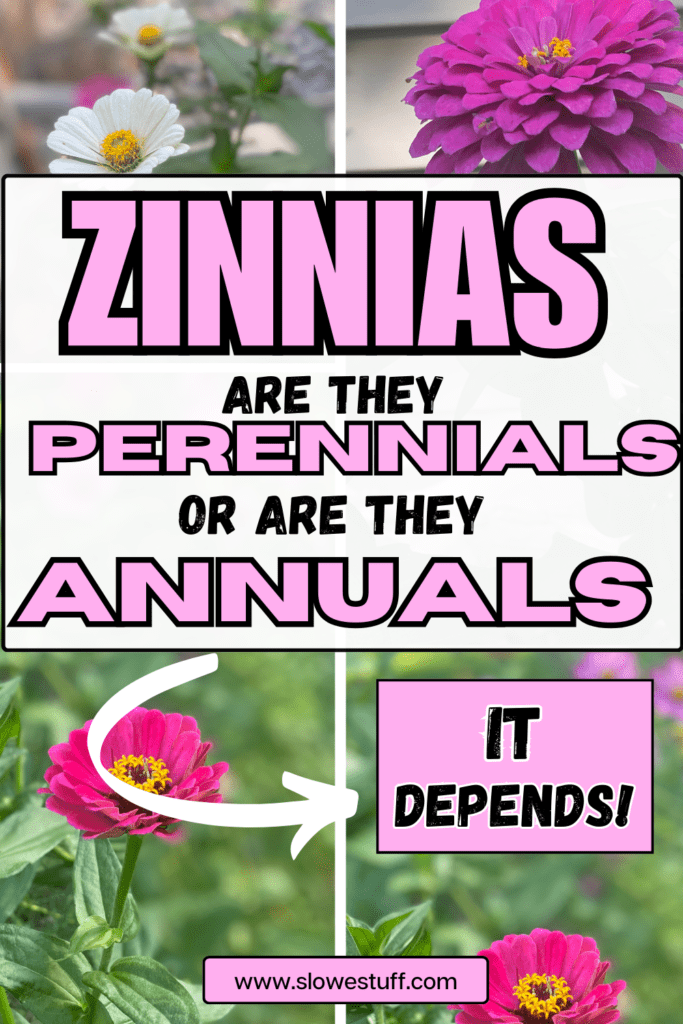
This post is part two of a gardening series asking if our favorite flowers are perennials. This post focuses on our favorite cut flower, the gorgeous zinnia. So the question is – are zinnias perennials or annuals?
Check out the other parts of this series!
- Part One is: Are Impatiens Perennials or Annuals?
- Part Three is: Are Gerbera Daisies Perennials?
Disclaimer: Affiliate links may be included for ease of reference and convenience. If used for purchase, they will result in a small commission at no additional cost to the buyer.
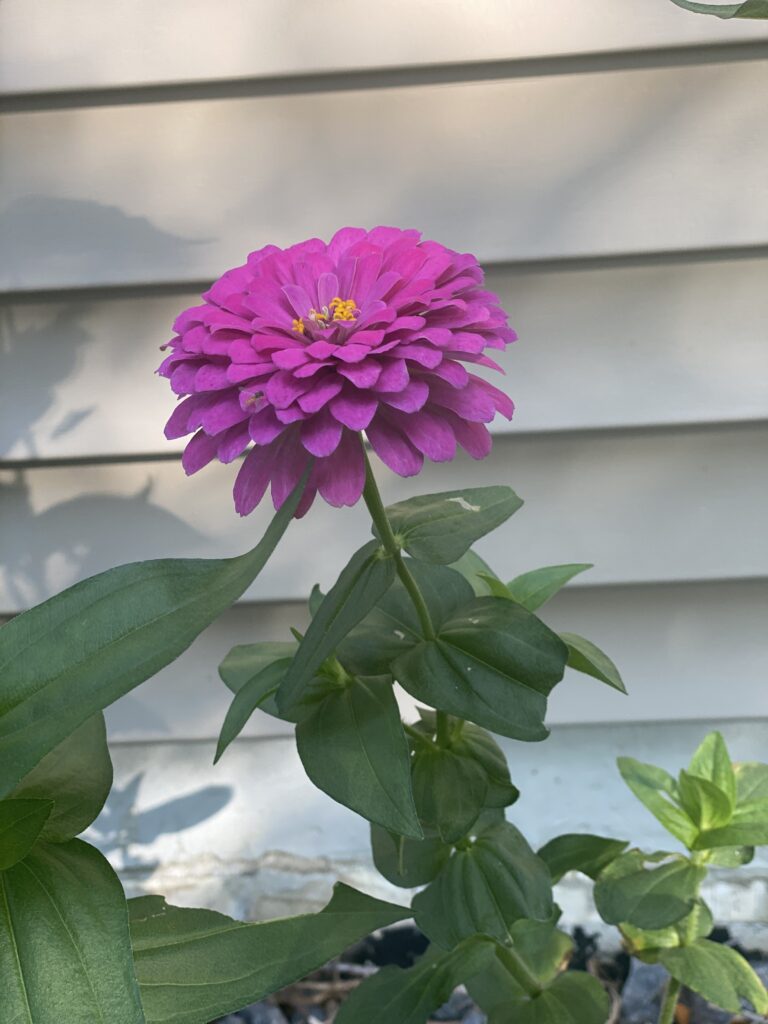
Are Zinnias Perennials? It Depends…
It really depends on where you live!
In most cases, zinnias are treated as annual flowers. That means they complete their entire life cycle, from seed to flower to seed production, within a single growing season. So you get the chance to plant them every year in all different kinds of flower bed spots, and you can choose different colors every year since they have a large variety of different flower color.
However, there’s a twist! There are actually a few perennial genus zinnia species native to the southwestern United States and northern Mexico, for those lucky folks who live in zones 4-9.
The National Gardening Association has a plant database to find more details on the distinctions between annual and perennial zinnias based on climate zones. Know your zone!
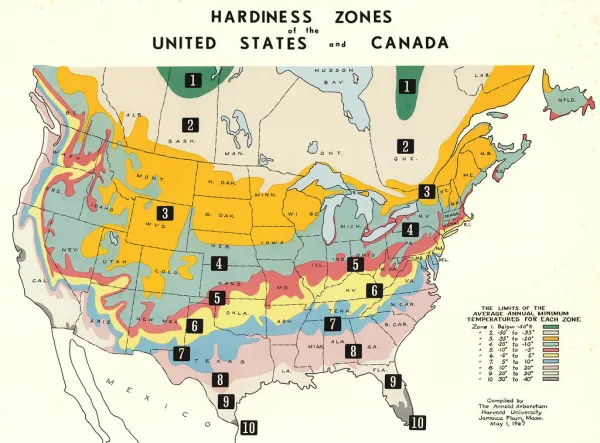
Perennial Zinnia Varieties & Colors
The perennial types of zinnias include the Rocky Mountain Zinnia, the Zinnia Angustifolia and Haage’s Zinnia. We will link each variety below so you can see what they look like, plus the zones that they will grow as perennials.
Rocky Mountain Zinnia (Zinnia grandiflora): A low-growing wildflower with sunny yellow, single blooms. It’s hardy in zones 4-9.
Zinnia elegans angustifolia: A wildflower species with single, yellow or orange flowers. It’s hardy in zones 5-9.
Haage’s Zinnia (Zinnia haageana): A mounding perennial with single blooms. It’s hardy in zones 7-9.
These perennial plants are typically less common than their annual counterparts and may require specific growing conditions to thrive outside their native environment, but generally speaking they are always going to want well-drained soil, full sun, and good air circulation to avoid powdery mildew.
Annual Zinnia Varieties & Colors
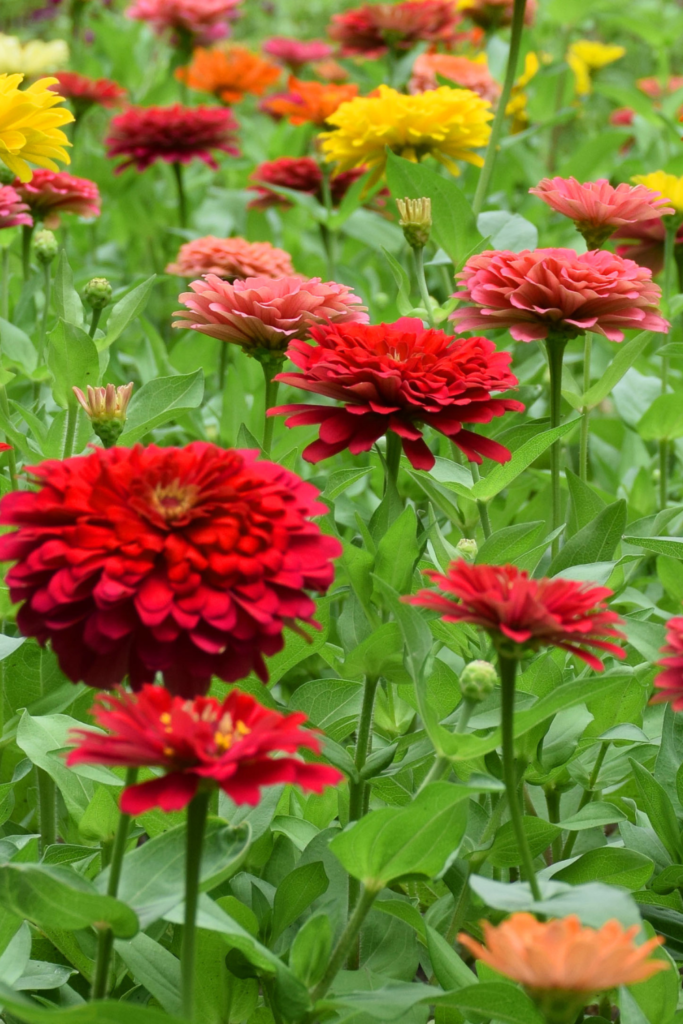
For most of us, zinnias will be annual flowers. They come in a dazzling array of vibrant colors, shapes, and sizes, offering something for everyone. These include Dahlia flower zinnias, cactus zinnias, elegans mix, thumbellinia series and queen series annual plants. Most garden centers will also have taller varieties as well as dwarf varieties, some with larger flowers and others that are small plants. You can get all kinds of variety perfect for flower arrangements.
We have each listed below with an image and link to each if that is what you are looking for!
Dahlia-Flowered Zinnias: Large, double flowers resembling dahlias, available in various colors like red, orange, pink, and purple.
Cactus Zinnias: Unique, spiky petals that resemble a cactus flower. They come in vibrant shades like pink, orange, and red.
Elegans Mix: A classic zinnia variety with single flowers or double blooms in a wide range of colors.
Thumbellinia Series: Compact plants with small, single blooms, perfect for containers or borders. They come in various colors like pink, orange, and yellow.
Queen Series: Tall zinnias with large, impressive blooms, ideal for making a statement in the garden or cutting garden.
If you buy wildflower seed mixes, you can be sure zinnia flowers are included in there. Given that they are fast growers, produce beautiful flowers that are great for cutting gardens, plus produce nectar for the pollinators, they are fantastic for gardeners of all ages and experience levels.
Ideal Growing Conditions for Zinnias
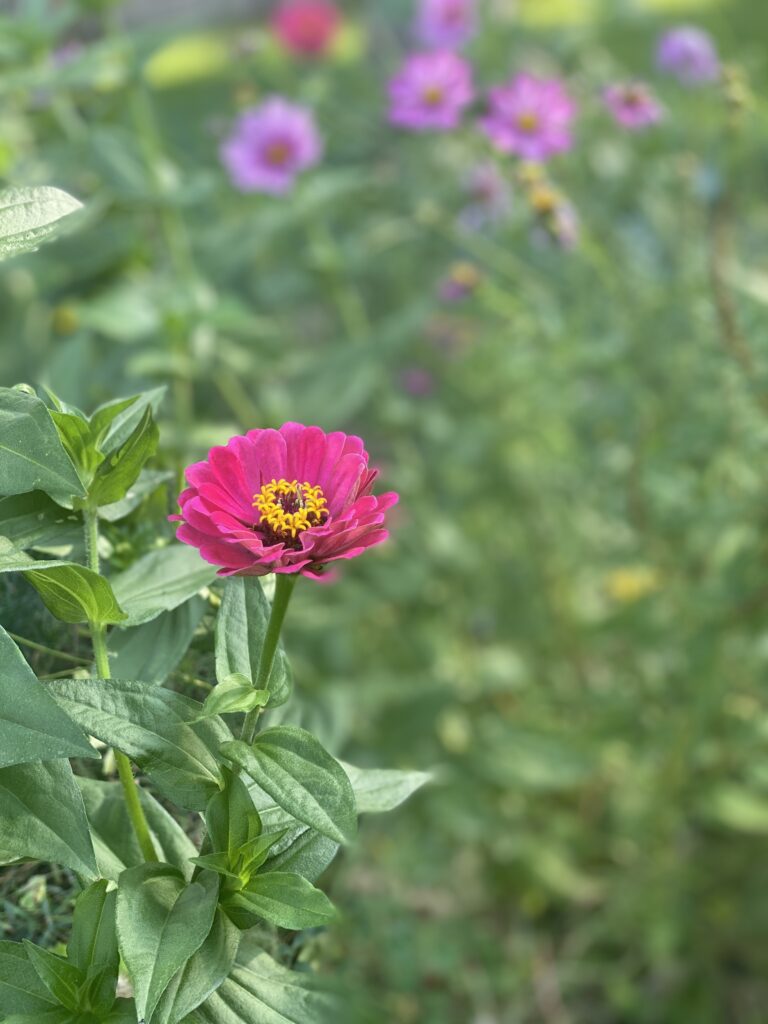
Zinnias are relatively low-maintenance plants, but they do have some specific needs for optimal growth:
- Sun: Zinnias are sun worshippers! Plant them in the sunniest, hottest spot in the yard that they can get full sun. At least 6-8 hours of direct sunlight daily will reward you with gorgeous blooms that keep producing all season long.
- Soil: Well-draining soil is crucial. Amend your soil with compost or aged manure for better drainage and nutrient content.
- Water: Zinnias need consistent moisture, especially during hot weather. Water regularly, but avoid soggy soil.
- Temperature: Zinnias thrive in warm temperatures. They are sensitive to frost and won’t tolerate cold weather. If you have a risk of an early first frost snap, but it is too early and you know the weather will warm back up before autumn truly hits, go cover up your gorgeous zinnias, or go ahead and cut them all before the frost so you can enjoy them in your flower bouquets. They won’t tough it out for you if there is frost, and we would hate for you to lose them!
When you think of a good place to plant zinnias, think of the spot in your garden you avoid because it is too dang hot and has no shade in the summer. While you will be looking for some shade, the zinnia seeds, and later the zinnia plants and flowers, want alllll that sun. Plant them in that super hot corner or along that southern facing fence that gets punished with sun. They will LOVE it! Remember to keep them watered though!
Are Zinnias Easy to Grow from Seed?
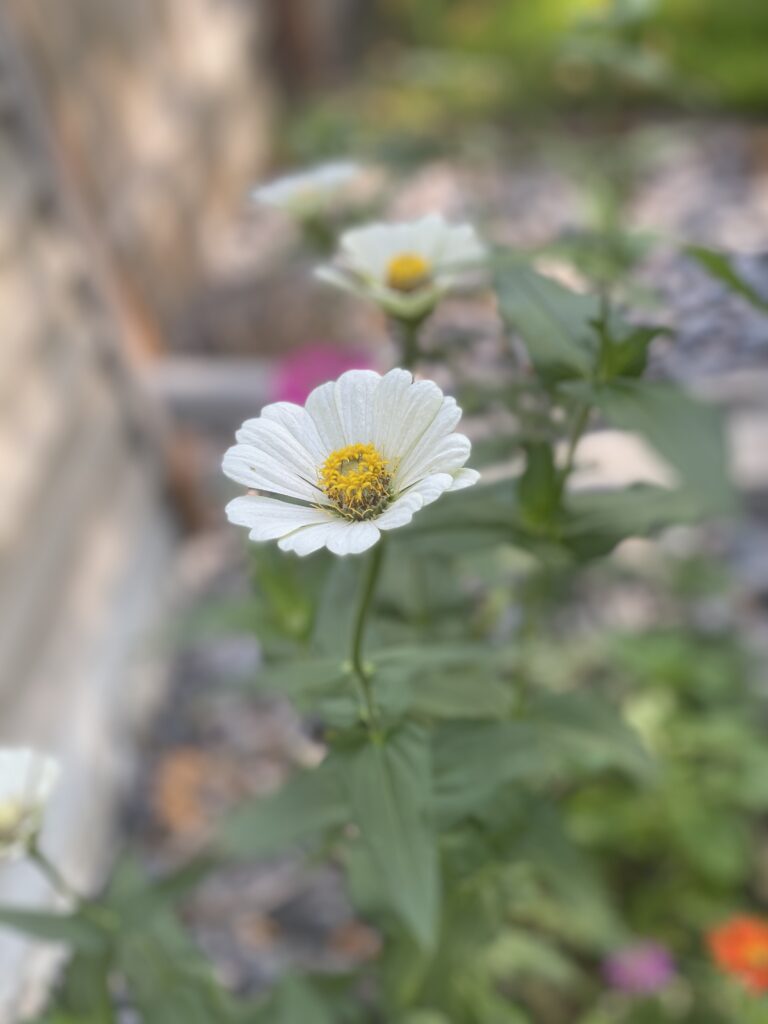
YES!! Zinnias are exceptionally easy to grow from seed. You can start seeds indoors a few weeks before the last frost for an earlier bloom if you want.
We are definitely team “direct sow” right into the garden beds after the last risk of frost has passed. Check your zone for your frost date! Depending on where you live, some of you are luckier than others and can get out in the garden earlier.
Zinnias are so low maintenance; all you have to do is give them a chance! Like all of us lol! Get them in the soil and give them a water or two if you don’t have rain, and they will reward you. They are fast growers, so you will be able to go out into the garden and see changes in them every day.
Harvesting Zinnia Seeds

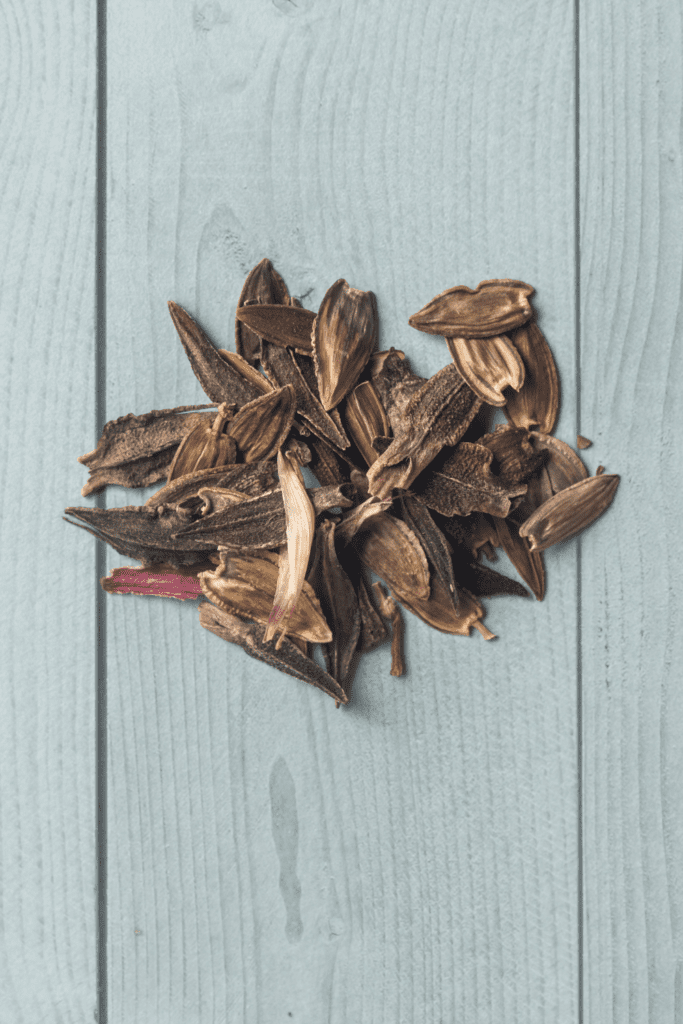
Once you have grown zinnias, you can cultivate seeds yourself to plant the next year! Here are the steps to cultivating zinnia seeds:
Here are the steps to harvest zinnia seeds at the end of the season:
- Timing is everything! The key to a perfect zinnia seed harvest is timing. Keep an eye on your zinnia flowers until the flower heads look totally dead – ugly, dry and brown. Blooms with any color or freshness won’t contain mature seeds. The flower will feel light and papery.
- You should be able to see the seeds. The little black or dark brown seeds will be in the dried petals. They are teardrop shape with a pointed end.
- If the flower head doesn’t feel completely dry and brittle, but you need to go ahead and cut it, you can put them in a paper bag or cardboard box in a cool, dry, well-ventilated location for a few days to let them dry all the way out.
- Once dry, lets get the seeds out! You can do it one of two ways.
- Manual Method: Gently pull apart the dried flower head over a container or sheet of paper. The seeds should readily fall out. Rub the remaining flower material lightly between your fingers to release any stubborn seeds.
- Paper Bag Method: (This one is a fun way to do it if you have child helpers. Place the dried flower head in a paper bag. Gently crush the head with your fingers or a rolling pin to loosen the seeds. Shake the bag well to dislodge all the seeds from the flower debris.
- Take out any remaining leaves or other materials before you store them. Then, simply put the seeds in a sealed container in a cool, dry place like a refrigerator or a dark pantry.
Thats it! Not too hard to harvest the seeds. If they are properly stored, and you remember where you put them, (lol, we inevitably forget) zinnia seeds can remain viable for up to 3-4 years! So, in a way, you are turning an annual plant into a perennial one, as long as you do the labor to store the seeds every year.
Self-Seeding: In some cases, zinnias can reseed themselves in mild climates and will bloom again the following year. Whenever that happens to us, we feel like the luckiest gardeners ever! Our rule is if it seeded itself, or if the birds planted it (dropped in in a random location) it gets to stay there. Always!
If you don’t want to store seeds, there are so many varieties available, and they are very affordable. You can find a large selection in our storefront!
Propagate Zinnias From Cuttings
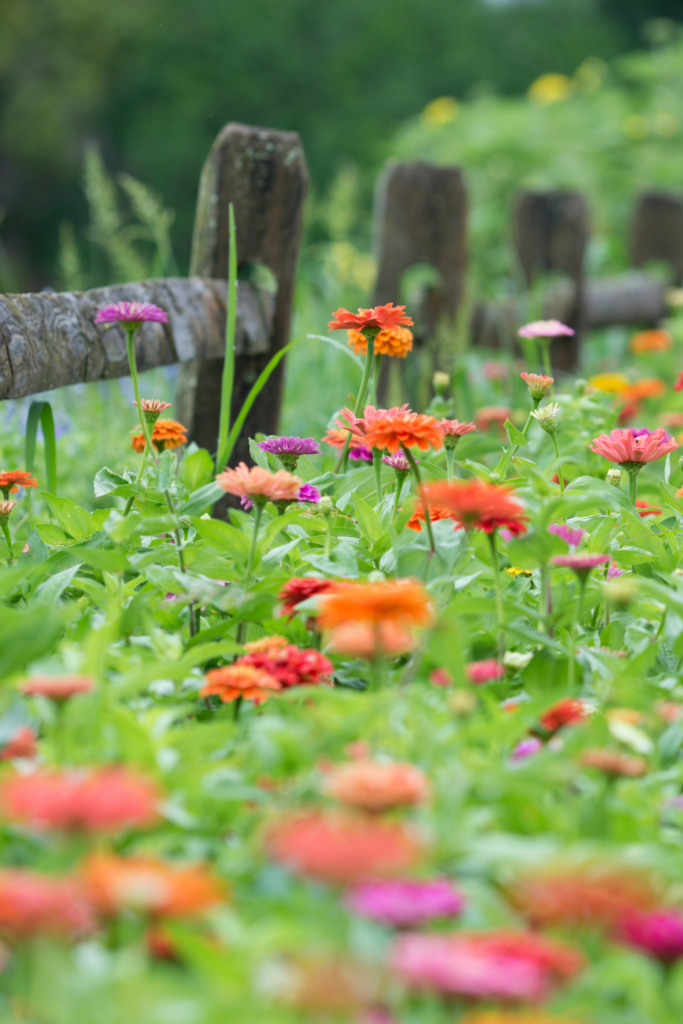
While less common, zinnias can also be propagated from stem cuttings. This is a great idea if you have a longer summer season before frost hits. If you take cuttings from healthy, non-flowering stems in early summer, you can start to grow a second batch of flowers.
Once you take the cutting, dip the cut end in rooting hormone and plant it in a pot with a well-draining potting mix. Keep the soil moist and provide indirect light. Roots should develop within a few weeks.
For all of our favorite gardening items and tools, check out our storefront!
Zinnias – The Perfect Cut Flower To Grow
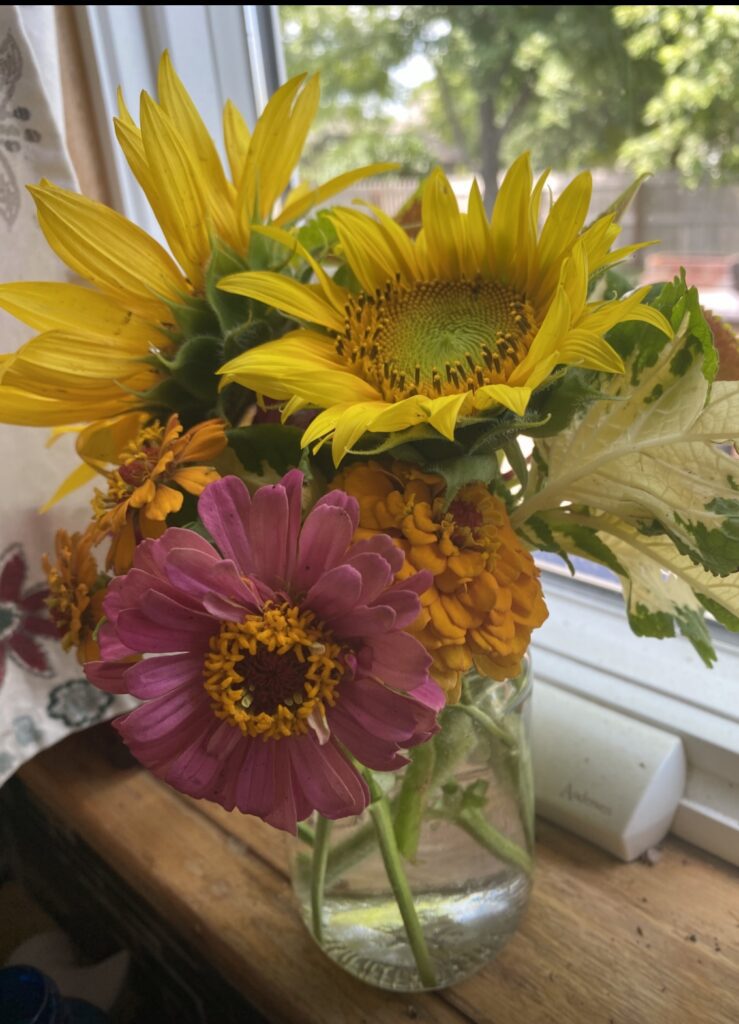
Zinnias are not just beautiful in the garden; they are also well known to make excellent cut flowers! Here’s why:
- Long vase life: Cut zinnias can last up to a week in a vase, adding a burst of color to your indoor space.
- Variety of colors and shapes: Zinnias are just stunning, with their happy open faces and a huge variety in the colors available, as well as the size and flower type. Some have double blooms, some have more spiky flowers – its hard not to find a zinnia flower you will like.
Tips for Cutting Zinnias:
- Cut stems early in the morning when the flowers are cool and fully open.
- Use sharp and clean pruners or shears to make clean cuts at an angle.
- Select stems with healthy foliage and developing buds for longer enjoyment.
- Strip off any lower leaves that will be submerged in water.
- Place the cut stems in a clean vase filled with cool, fresh water.
- Add a floral preservative packet (optional) to extend vase life.
- Change the water every few days and recut the stems to prevent bacterial growth.
Zinnias as Pollinator Magnets
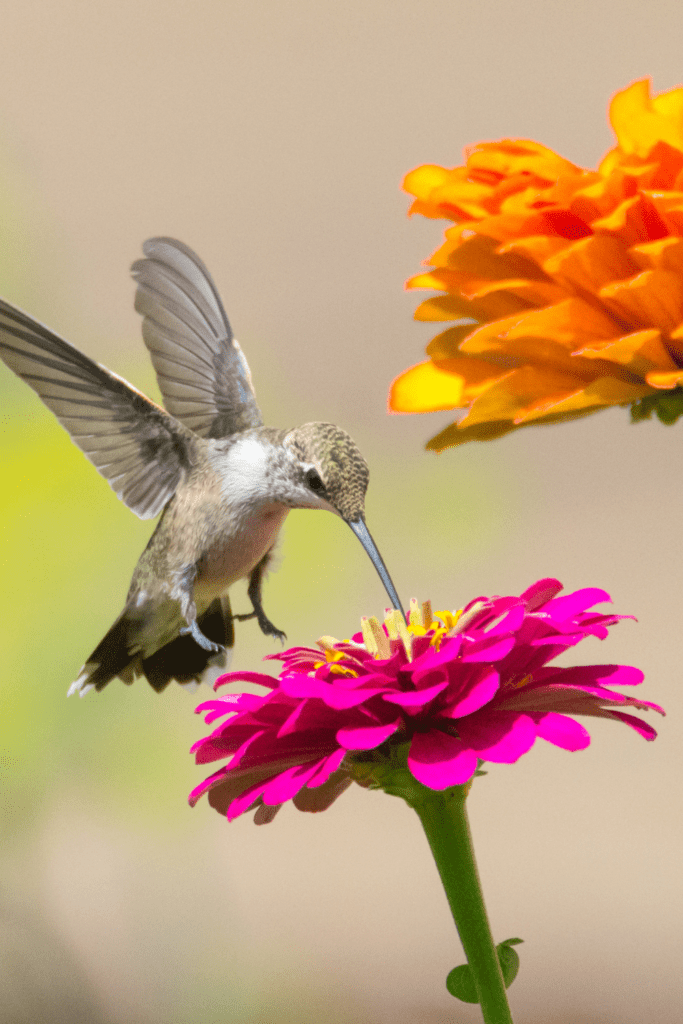
This is a big thing for us. We want our yard to be full of life as well as beautiful. Almost all plants and flowers in our yard serve a purpose, and we love that zinnias are a haven for pollinators!
We have hummingbird feeders in our yard, but we also want to plant a variety of flowers to give them lots of nectar options. Watching them fly around is one of the joys of summer.
Butterflies also love to sit on those wide open flowers and get their nectar, and you will be rewarded in being able to watch the flutter around the yard.
If you love to vegetable garden, your veggies will love you if you plant a little flower garden or put zinnias in a raised bed around the yard. It attracts all those pollinators, that zoom past them all summer, making for healthy and strong vegetable plants. Its a win-win!
Additional Tips for Zinnias
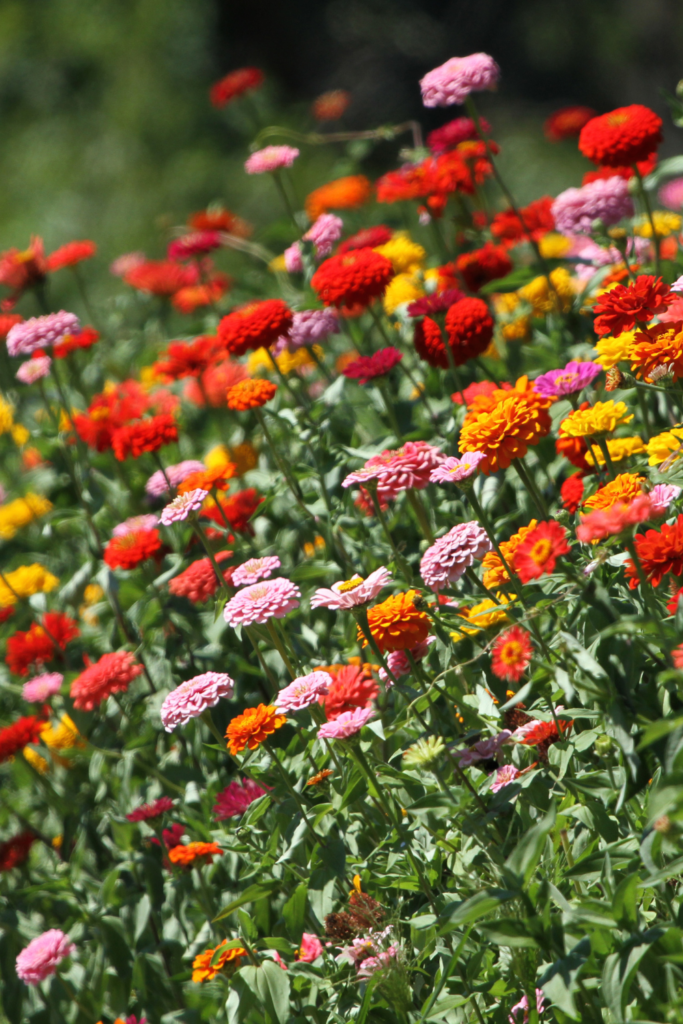
These are a pretty low maintenance plant, but they do benefit from a few small things.
- Deadhead spent blooms regularly to encourage continued flowering with new blooms throughout the season. This is well worth the effort! Grab a pair of garden shears and wander out to the zinnia patch in the summer evenings or mornings to leisurely do a little deadheading as you cut your flowers to bring in the house.
- Feed occasionally with a balanced fertilizer to promote healthy growth and vibrant blooms. See our post on our fertilizer combination we used last year with great success!
- Watch for signs of pests like slugs and snails as they can be attracted to tender seedlings, plus the ever present japanese beetles.
It is also recommended that you space plants according to their mature size when you plant. To be honest though, we laugh and laugh at this tip because our motto is more is better. We dump as many seeds as we can in our sunny spots because we want all the zinnias!
Are Zinnias Perennials or Annuals?
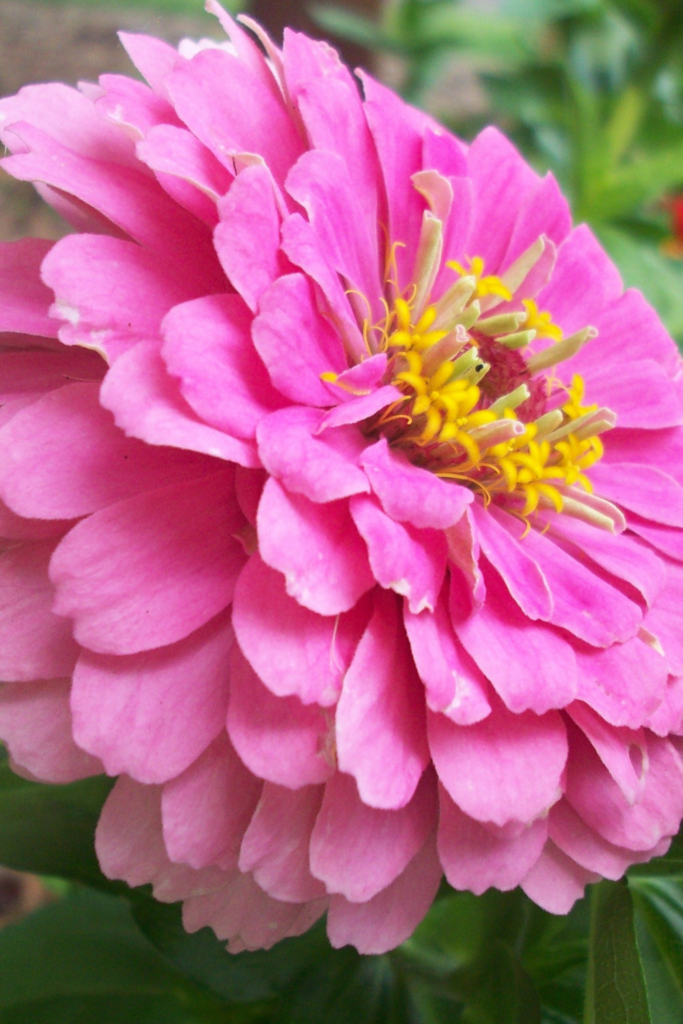
We hope that we have answered your question as to whether zinnias are perennials, and given you some additional answers to your burning questions about zinnias, and that you add them to your gardening plans this year!
This is part two of a series answering this question for all our favorite summer flowers, so be sure to check out our first part of the series answering the question – are impatiens perennials?
If you are looking for more gardening inspiration, check out our gardening section of the blog. It includes information on more of our favorite pollinator plants, raised garden beds, and gift ideas for gardeners too!
Happy Gardening!
Slowestuff
Love Gardening Content? Pin This Post to Find Us Again!
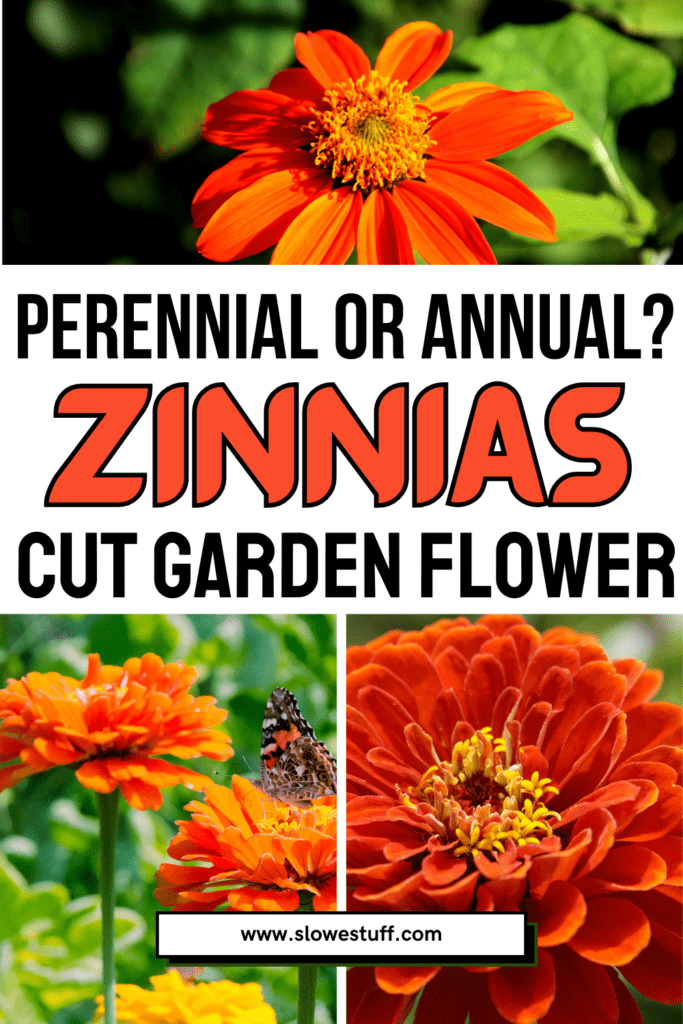
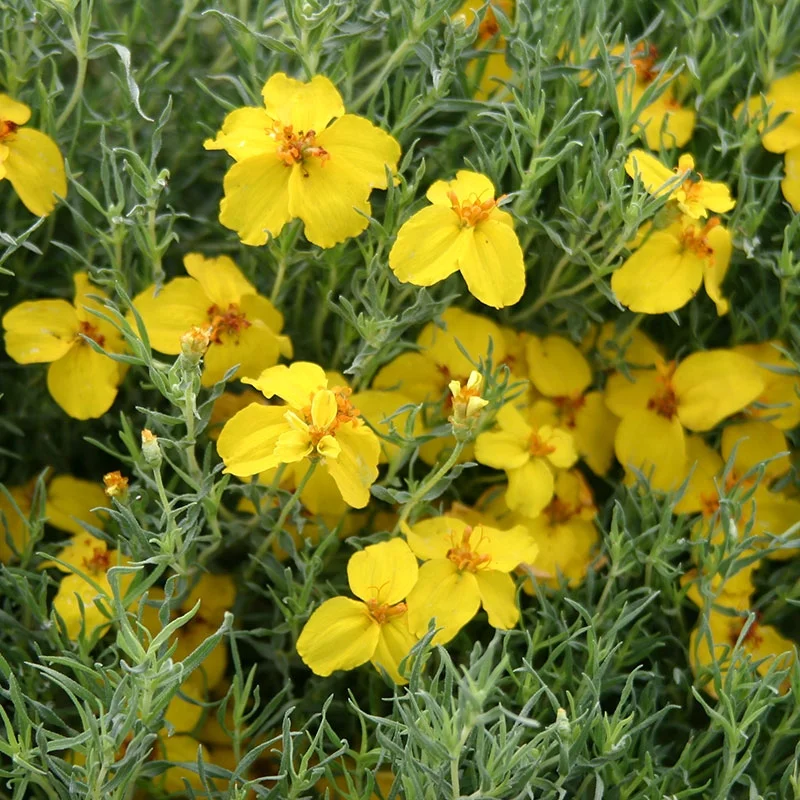

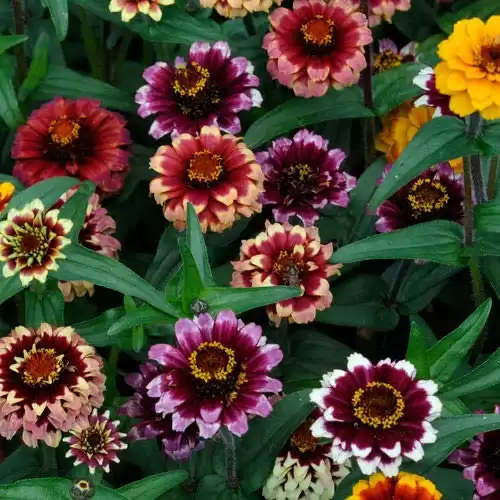
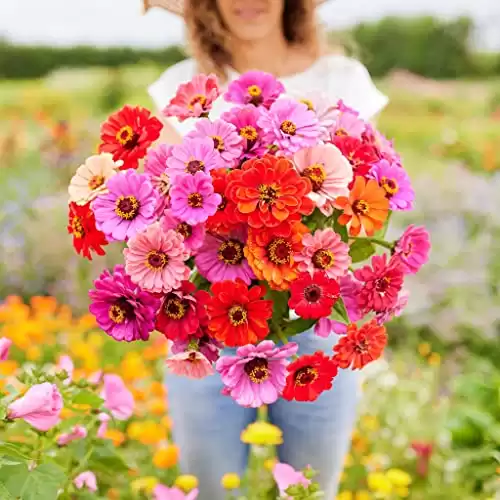
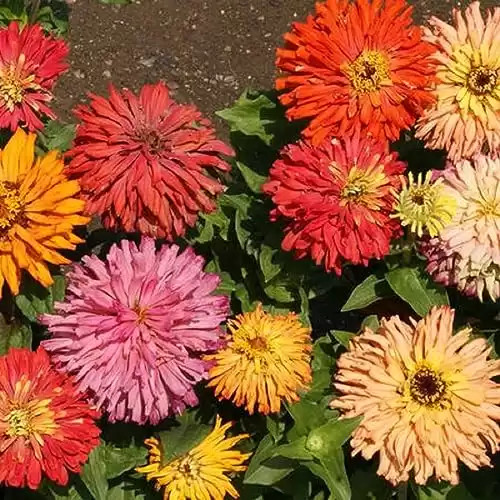
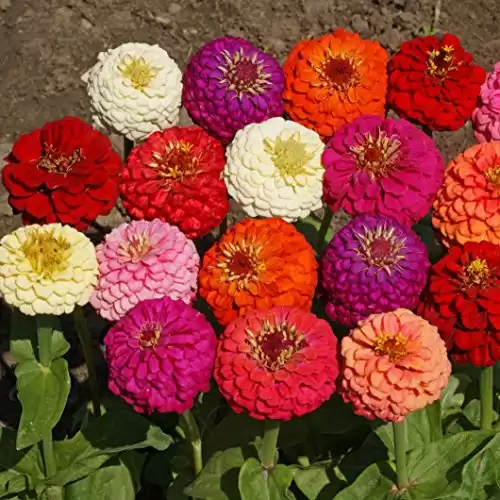
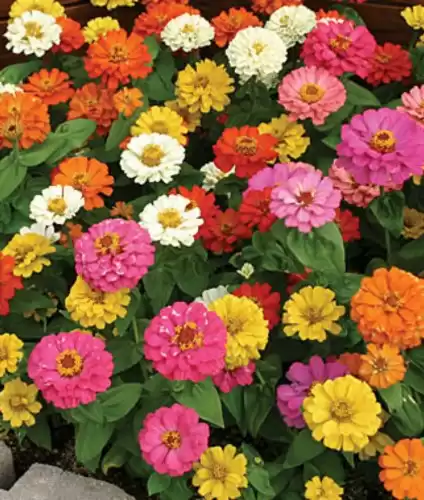
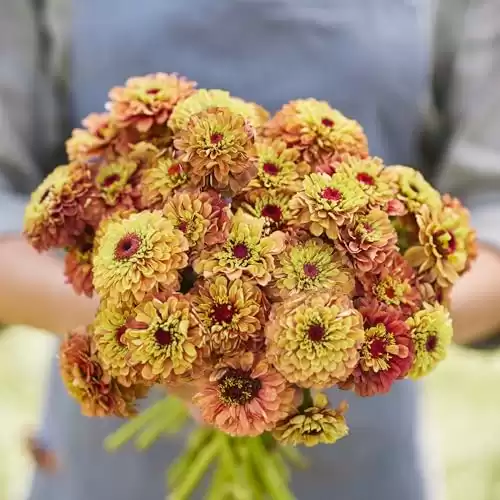
[…] Are Zinnias Perennials or Annuals? It Depends! […]